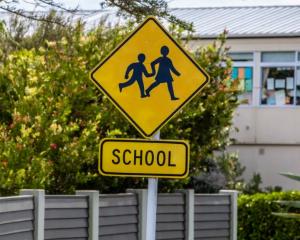
However, St Clair School principal Jen Rodgers said it was important for parents to remember that each school was constructed differently and there was no one right way to do it.
“There will be a lot of talk about how what’s going on in my school is different from what’s going on in your school.
“Every school is making decisions that are best for their context and it’s really important for parents to understand.”
Ms Rodgers said she was focusing on the wellbeing of her pupils and making sure they were safe and happy, and felt welcomed and ready to learn.
“Children have been told for the last two months to stay home, stay safe and don’t let anyone near you.
“So now we have to unpack that, with the help of families, and reframe it so that they’re not frightened of people being near them, but also help them understand what is a safe distance.”
Like many primary schools around the region, there would be plenty of hand sanitising, teaching about staying out of the “moist breath” zone, playing without touching each other, avoiding touching or eating each other’s food, only drinking from water bottles filled at home — not water fountains — and cleaning items after use.
She said other initiatives included staggering break times, and only allowing parents to drop their children at the school gate rather than come on to school grounds, something North Otago Primary Principals' Association president Kate Mansfield said would also be practised in the Waitaki district.
Otago Girls’ High School principal Linda Miller had put initiatives in place that aimed to reduce the risk of someone getting infected and ensure the school could identify and contact anyone who became infected.
As well as good hygiene practices, pupils’ desks and class equipment would be disinfected at the beginning of each class and high-use surfaces, including wash basins, banisters and main door handles, would be cleaned several times each day.
Pupils would be physically distanced in class.
“To achieve this, we have re-roomed some classes to put large classes in the largest classrooms, separated desks and chairs, limited student numbers in some spaces, increased the number of wet lunch spaces, cancelled assemblies, designed a one-way system in and out of all areas of the school and reduced the number of class movements each day.
“This will mean movement around school will be quite different to usual.”
However, Taieri College principal David Hunter said many of those initiatives would not be possible at his 1150-pupil school.
“We’re considering ourselves to be one giant bubble now and it’s about being practical and sensible around social distancing.
“We’re not saying that kids have to work individually at desks. We want school to look and feel as normal as we can possibly make it within the guidelines.
“Our emphasis is on hygiene and common sense when it comes to social distancing.”
Invercargill's Te Wharekura o Arowhenua principal Gary Davis said the school would implement social distancing practices and up hygiene standards, and he expected to welcome back the majority of pupils on Monday.












